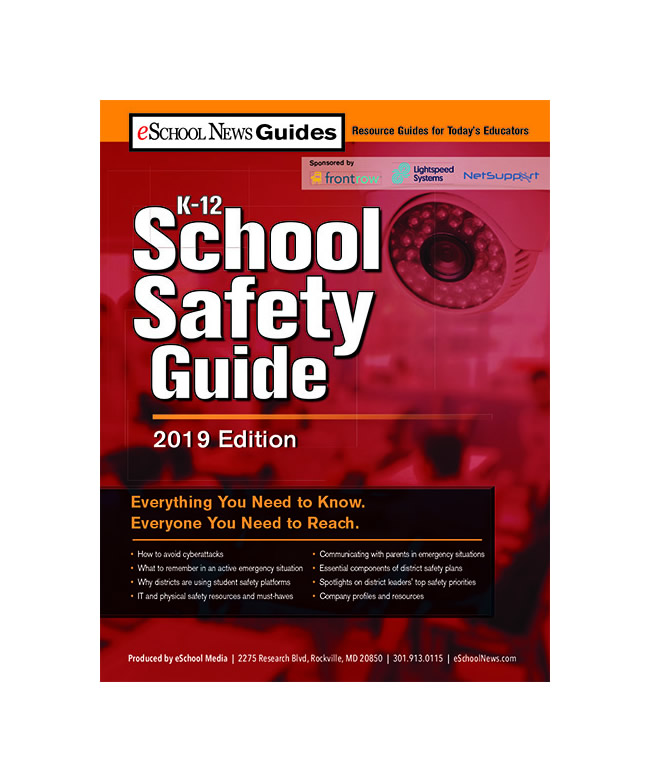Bullying is a real danger for students today. More than 28 percent of U.S. students in grades 6-12 experience bullying and more than 160,000 stay home from school each day due to fear of being bullied. In today’s always-connected world, cyberbullying has also become a growing problem. It can occur anywhere and at any time—including at school. Every day it seems there are new apps, forums, or websites that allow students to anonymously post hateful messages and gang up on their peers.
It is the primary job of the education system to teach our children. However, schools are also entrusted by parents to keep students safe. Bullying prevention is part of this and schools can tackle it on several fronts. It involves creating positive school climates, adopting rigorous reporting systems, and educating students and parents about digital citizenship and how to use social media responsibly.
Related content: An essential guide to cyberbullying
The role of monitoring software
Another way schools can get in front of the issue is by using monitoring software to keep an eye on what students are doing while on the school network. This is where I come in. As the technology director for the West Rusk County (TX) Consolidated Independent School District, I have been a staunch proponent of using technology to support student safety. This includes using monitoring software.
Related Content:
eSchool News School Safety Guide
The eSchool News School Safety Guide is here! It features strategies to help you create and maintain safe and secure learning environments, both physical and online. A new eSchool News Guide will launch each month–don’t miss a single one!
Monitoring software acts as a safety net. It gives administrators another set of eyes to watch what students are doing online. We use Impero Education Pro because it includes monitoring software as well as classroom/IT management software. The company works with advocacy organizations to develop lists of keywords and phrases that could indicate cyberbullying (and other concerns such as self-harm, violence, or radicalization). It sends me and my staff an alert when it detects students typing those words or phrases or accessing certain sites that are often used for online bullying.
Monitoring software in action
Monitoring software has helped us detect a number of safety concerns over the years. For example, it helped us discover a situation in which students were using an online forum to bully a classmate. Although their posts were anonymous, we were able to use the software to identify which students were logging onto and typing on that site and when. The software also allowed us to pull screenshots and time-stamped videos of the activity so there would be no doubt about who was posting the comments.
This type of tool can help a school identify which students are involved in a situation and it also provides evidence (the screen shots and time logs) that you can share with the proper administrators, with parents, or even with authorities when needed.
If my school district didn’t have monitoring software, we might never have known this particular cyberbullying situation was occurring and, even if we had been told about it, it would have been extremely difficult if not impossible to concretely identify the culprits.
Tips to strengthen your cyberbullying strategy
Schools that are considering adopting monitoring technology to combat cyberbullying should keep the following things in mind:
- Make sure the software works on multiple types of devices. If students use PCs in the computer lab and Chromebooks in the classroom, the software needs to be able to work on both.
- Make sure your district has an acceptable use policy. Students and their parents should be made aware of and agree to the rules regarding the technology students use in school. This includes informing students that their activity will be monitored.
- Make sure the monitoring program doesn’t just monitor social media. Social media is often where cyberbullying happens, but there are plenty of other sites that students can use for mischief.
- Select software that provides an anonymous reporting feature so that students have another avenue to report concerns.
- Schools should also teach digital citizenship lessons to help students learn how to use technology in a safe and appropriate manner. This will help teachers and students get the most out of their technology while also keeping students safe online.
- Use situations as a learning opportunity. Bullies need to know their actions have lasting effects and victims need to know they are being helped.
Bullying, including cyberbullying, can impact students’ academics. But worse, it can result in lasting emotional harm. In the most severe cases, it could potentially push a student to consider violence or suicide. The use of monitoring software to help detect and address these issues grows more and more important as schools add devices for student use. For schools that are 1:1, or nearly 1:1, it should be a requirement.
The more time a student spends online at school, the more opportunities they will have—whether you think they will or not—to get into trouble online and to experience or engage in cyberbullying. Monitoring technology can help schools get in front of this issue and could potentially prevent tragedy.
- 4 ways to encourage play in education - April 25, 2024
- CoSN IT Leader Spotlight: Lisa Higgins - April 25, 2024
- It’s time to pay student teachers - April 25, 2024


